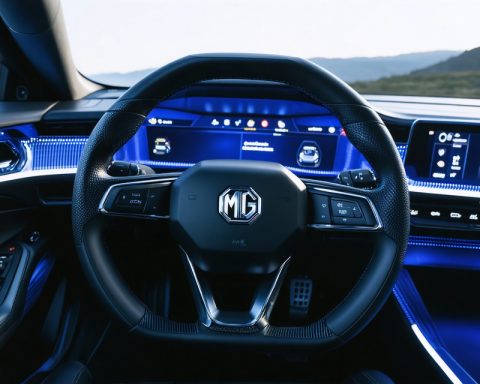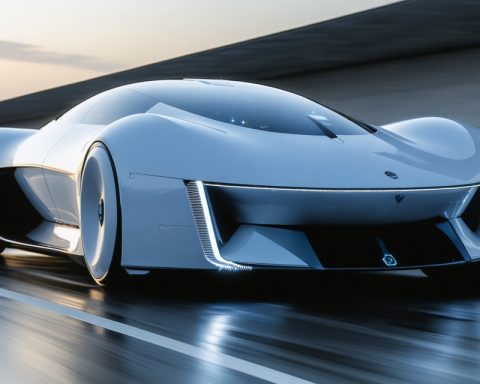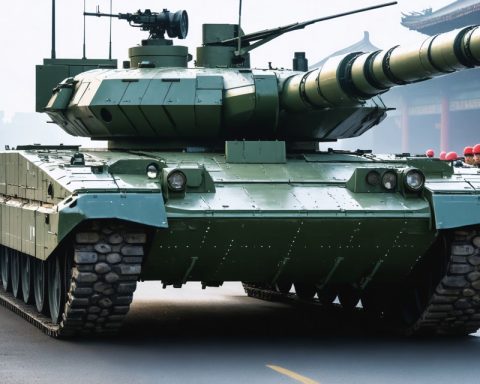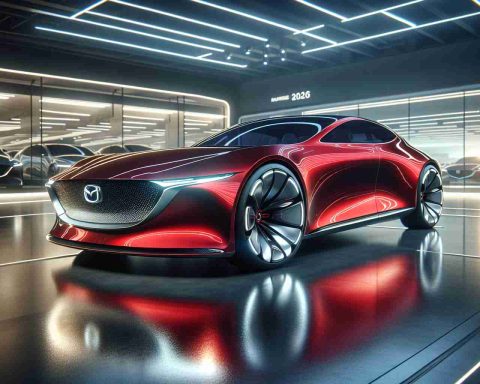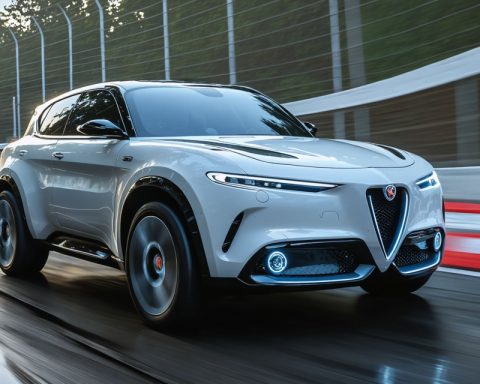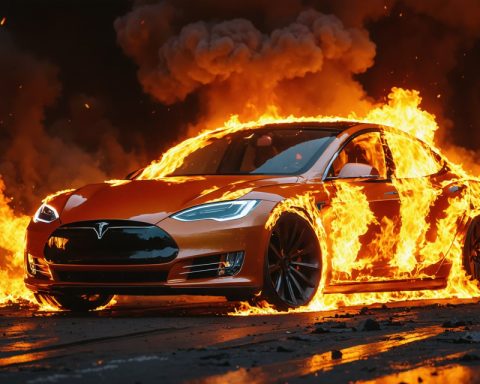- The EV industry faces intense competition and financial hurdles, with only Tesla, BYD, Li Auto, and Series Group achieving positive operating margins in 2024.
- Tesla posted a 7.2% operating margin, while BYD reached 6.4%, with BYD potentially overtaking Tesla in profitability if trends continue.
- Vertical integration is a key strategy for success, as seen with Tesla and BYD, allowing cost control and operational efficiency.
- Chinese companies Zeekr, Xpeng, and Leapmotor are nearing profitability, although Nio, Polestar, and Rivian continue to face significant losses.
- Lucid struggles with a -374% margin but benefits from Saudi financial backing, highlighting disparities in the sector.
- Tesla’s dominance is under threat by emerging competitors and price wars, underscoring the need for innovation and agility.
- The pursuit of profitability in the EV market requires strategic foresight and the ability to leverage vertical integration and scalability.
The electric vehicle (EV) industry, once a promising frontier of innovation and sustainability, now presents a landscape of fierce competition and daunting financial challenges. In 2024, only four EV-exclusive companies basked in the glow of positive operating margins: the towering giants Tesla and BYD, alongside China’s up-and-coming players Li Auto and the Series Group, known for their Seres, Aito, and Landian brands. This stark figure comes amid soaring sales volumes and the transformative push towards electrification. Yet, the road to profitability remains elusive for many in this burgeoning sector.
Tesla, a pioneer and leader in the EV world, posted a 7.2% operating margin. Still a commendable figure, it reflects a decline from the lofty peaks it once enjoyed. BYD, in contrast, notched a 6.4% margin, climbing steadily with each passing year. If current trends persist, BYD could soon eclipse Tesla, assuming the mantle of the world’s most profitable EV-exclusive enterprise.
The story behind these numbers is one of strategy and execution. Both Tesla and BYD have embraced vertical integration with a fervor, producing everything from batteries to drivetrains in-house. This approach allows them to control costs and enhance efficiency, setting a high bar for profitability that other EV makers aspire to reach. Li Auto and Series Group follow a similar playbook, leveraging streamlined operations to stand resilient in a competitive market.
Meanwhile, a wave of Chinese startups is gradually closing in on profitability. Zeekr, the premium division of Geely, fights its way closer to the break-even point with a -8.5% margin, while Xpeng and Leapmotor make strides, halving their operating losses year-on-year. However, the road is still long and arduous for other players. Nio, once celebrated for its technological prowess, grapples with a margin exceeding -30%, and Western favorites Polestar and Rivian find themselves entrenched in losses despite notable improvements.
Perhaps most glaring is the plight of Lucid, an EV producer that, despite a staggering -374% operating margin in 2024, remains buoyed by the deep pockets of Saudi sovereign wealth. This financial backing cushions the company from the stark commercial realities confronting its peers, an advantage not afforded to smaller, independent rivals struggling to survive.
While Tesla remains the sole non-Chinese firm with consistently sustainable profits, it stands on shifting sands. The onslaught of emerging challengers and relentless price wars threatens to erode its dominance, hinting at a future where nimbleness and innovation are crucial as ever.
The EV realm is undeniably fertile ground for technological advancement and visionary ideas. But as new players emerge and the race tightens, the pursuit of profitability has become a game of high stakes, demanding deft maneuvering and strategic foresight. Those who can wield the power of vertical integration and scalability might just find themselves rewriting the rules of the automotive industry.
The Explosive EV Revolution: Winners, Losers, and What Lies Ahead
Understanding the EV Industry Landscape
The electric vehicle (EV) industry is in the midst of a transformative phase, buoyed by innovation, competition, and financial hurdles. In 2024, only four companies—Tesla, BYD, Li Auto, and Series Group—reported positive operating margins, highlighting the intense competition even amidst skyrocketing sales and a universal drive for electrification.
Key Insights:
1. Tesla’s Shifting Margins: While Tesla remains a juggernaut in the EV sector with a 7.2% operating margin, this represents a decline from previous highs. The pressure from emerging competitors and ongoing price wars indicates a precarious future where adaptability is critical.
2. BYD’s Rising Trajectory: Achieving a 6.4% operating margin, BYD is on a growth trajectory that positions it as a potential leader. With consistent improvements, BYD could challenge Tesla’s dominance soon.
3. Vertical Integration as a Success Strategy: Both Tesla and BYD thrive on vertical integration, producing crucial components like batteries and drivetrains in-house. This strategy enhances cost control and efficiency—a benchmark for profitability that other EV makers aspire to achieve.
4. Chinese Startups’ Growth: Other Chinese players such as Li Auto and Series Group have also embraced streamlined operations to maintain resilience. Startups like Zeekr, Xpeng, and Leapmotor are closing the profitability gap, while Nio faces significant struggles with highly negative margins.
5. Lucid’s Disproportionate Struggles: Lucid, despite a staggering -374% operating margin, is sustained by the backing of Saudi sovereign wealth. This financial advantage protects Lucid where other smaller rivals might not survive.
EV Market Forecasts & Industry Trends
– Growth of Chinese EVs: Analysts expect Chinese companies to continue their push into international markets, leveraging cost-effective production and government support.
– Innovation & Tech Hubs: Cities like Shenzhen and Hangzhou could emerge as hotspots for EV innovation, with ambitious startups transforming the global automobile narrative.
– Sustainability & Environmental Focus: As governments worldwide emphasize carbon-neutral targets, the EV industry’s pivot towards sustainable practices isn’t just beneficial—it’s imperative.
Potential Challenges and Controversies
– Price Wars: Aggressive pricing strategies to capture market share often compress margins, threatening the financial viability of smaller players.
– Regulatory Barriers: Emerging markets may impose now-predictable regulatory challenges that complicate expansions.
– Supply Chain Disruptions: Ongoing disruptions in global supply chains could impact production timelines and costs.
Actionable Recommendations for Consumers
1. Evaluate Incentives: Research local and federal EV incentives to understand financial benefits when purchasing an electric vehicle.
2. Consider Resale Value: Given the rapid evolution of technology, prioritize models known for maintaining value as new EV iterations are introduced.
3. Stay Updated on Charging Infrastructure: Before purchasing, assess the availability of charging stations within your area to ensure convenience.
Quick Tips for EV Enthusiasts
– Explore Multiple Brands: While Tesla and BYD lead, upcoming brands may offer competitive alternatives with unique features.
– Look for Sustainability Initiatives: Opt for brands that prioritize eco-friendly manufacturing processes.
– Invest in Home Charging Units: Given potential waiting times at public charging stations, home units offer convenience and long-term savings.
Suggested Links:
– Explore Tesla
– BYD Innovations
– Li Auto Insight
– Series Group Overview
As the electric vehicle market evolves, strategic foresight and nimbleness remain indispensable for manufacturers seeking sustainable profits. Consumers are encouraged to stay informed about technological advancements and market shifts to make informed decisions in this electrifying era of innovation.

